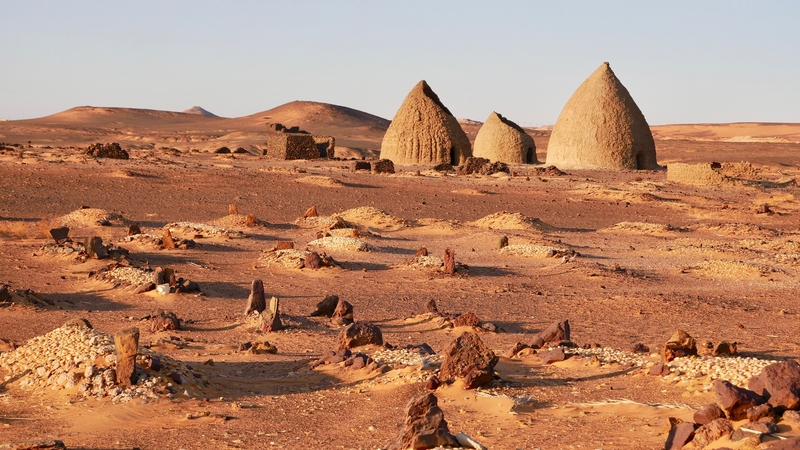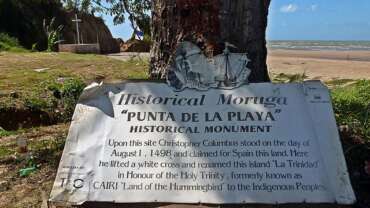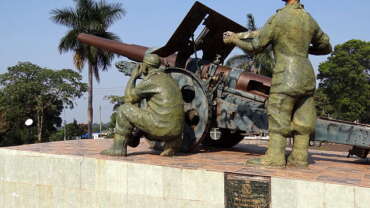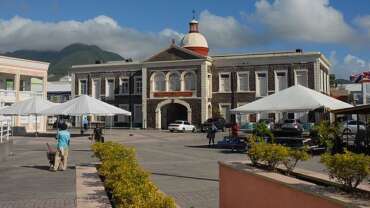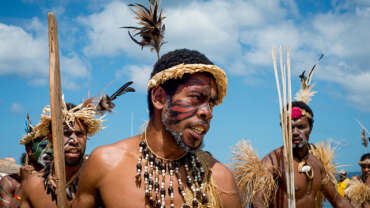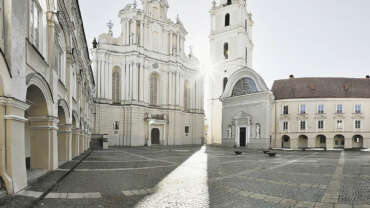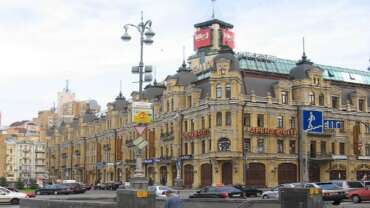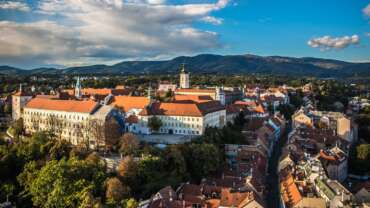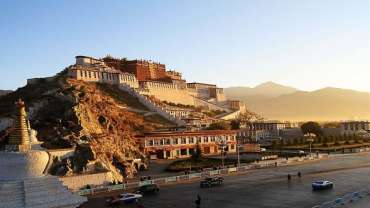Welcome to Sudan!
Sudan, country located in northeastern Africa. The name Sudan derives from the Arabic expression bilād al-sūdān (“land of the blacks”), by which medieval Arab geographers referred to the settled African countries that began at the southern edge of the Sahara. For more than a century, Sudan—first as a colonial holding, then as an independent country—included its neighbour South Sudan, home to many sub-Saharan African ethnic groups. Prior to the secession of the south in 2011, Sudan was the largest African country, with an area that represented more than 8 percent of the African continent and almost 2 percent of the world’s total land area.
Since ancient times the Sudan region has been an arena for interaction between the cultural traditions of Africa and those of the Mediterranean world. Islam and the Arabic language achieved ascendancy in many northern parts of the region, while older African languages and cultures predominated in the south.
History of Sudan
Ancient Nubia
The earliest inhabitants of what is now Sudan can be traced to African peoples who lived in the vicinity of Khartoum in Mesolithic times (Middle Stone Age; 30,000–20,000 BCE). They were hunters and gatherers who made pottery and (later) objects of ground sandstone. Toward the end of the Neolithic Period (New Stone Age; 10,000–3,000 BCE) they had domesticated animals. These Africans were clearly in contact with predynastic civilizations (before c. 2925 BCE) to the north in Egypt, but the arid uplands separating Egypt from Nubia appear to have discouraged the predynastic Egyptians from settling there.
Egyptian influence
At the end of the 4th millennium BCE, kings of Egypt’s 1st dynasty conquered Upper Nubia south of Aswān, introducing Egyptian cultural influence to the African peoples who were scattered along the riverbanks. In subsequent centuries, Nubia was subjected to successive military expeditions from Egypt in search of slaves or building materials for royal tombs, destroying much of the Egyptian-Nubian culture that had sprung from the initial conquests of the 1st dynasty. Throughout these few centuries (c. 2925–c. 2575 BCE), the descendants of the Nubians continued to eke out an existence along the Nile River, an easy prey for Egyptian military expeditions. Although the Nubians were no match for the armies of Egypt’s Old Kingdom, the interactions arising from their enslavement and colonization led to ever-increasing African influence upon the art, culture, and religion of dynastic Egypt.
Sometime after about 2181, in the period known to Egyptologists as the First Intermediate Period (c. 2130–1938), a new wave of immigrants entered Nubia from Libya, in the west, where the increasing desiccation of the Sahara drove them to settle along the Nile as cattle farmers. Other branches of these people seem to have gone beyond the Nile to the Red Sea Hills, while still others pushed south and west to Wadai and Darfur. These newcomers were able to settle on the Nile and assimilate the existing Nubians without opposition from Egypt. After the fall of the 6th dynasty (c. 2150), Egypt experienced more than a century of weakness and internal strife, giving the immigrants in Nubia time to develop their own distinct civilization with unique crafts, architecture, and social structure, virtually unhindered by the potentially more dynamic civilization to the north. With the advent of the 11th dynasty (2081), however, Egypt recovered its strength and pressed southward into Nubia, at first sending only sporadic expeditions to exact tribute but by the 12th dynasty (1938–1756) effectively occupying Nubia as far south as Semna. The Nubians resisted the Egyptian occupation, which was maintained only by a chain of forts erected along the Nile. Egyptian military and trading expeditions, of course, penetrated beyond Semna, and Egyptian fortified trading posts were actually established to the south at Karmah in order to protect against frequent attacks upon Egyptian trading vessels by Nubian tribesmen beyond the southern frontier.
The kingdom of Kush
Despite the Egyptian presence in Upper Nubia, the indigenous culture of the region continued to flourish. This culture was deeply influenced by African peoples in the south and was little changed by the proximity of Egyptian garrisons or the imports of luxury articles by Egyptian traders. Indeed, the Egyptianization of Nubia appears to actually have been enhanced during the decline in Egypt’s political control over Nubia in the Second Intermediate Period (c. 1630–1540 BCE), when Nubians were employed in large numbers as mercenaries against the Asian Hyksos invaders of Egypt. This experience did more to introduce Egyptian culture, which the mercenaries absorbed while fighting in Egyptian armies, than did the preceding centuries of Egyptian military occupation. Conversely, the presence of these mercenaries in Egypt contributed to the growing African influence within Egyptian culture.
The defeat of the Hyksos was the result of a national rising of the Egyptians who, once they had expelled the Hyksos from the Nile valley, turned their energies southward to reestablish the military occupation of Nubia that the Hyksos invasion had disrupted. Under Thutmose I (reigned 1493–c. 1482 BCE) the Egyptian conquest of the northern Sudan was completed as far as Kurqus, 50 miles south of Abū Ḥamad, and subsequent Egyptian military expeditions penetrated even farther up the Nile. This third Egyptian occupation was the most complete and the most enduring, for, despite sporadic rebellions against Egyptian control, Nubia was divided into two administrative units: Wawat in the north, with its provincial capital at Aswān, and Kush (also spelled Cush) in the south, with its headquarters at Napata (Marawī). Nubia as a whole was governed by a viceroy, usually a member of the royal entourage, who was responsible to the Egyptian pharaoh. Under him were two deputies, one for Wawat and one for Kush, and a hierarchy of lesser officials. The bureaucracy was staffed chiefly by Egyptians, but Egyptianized Nubians were not uncommon. Colonies of Egyptian officials, traders, and priests surrounded the administrative centres, but beyond these outposts the Nubians continued to preserve their own distinct traditions, customs, and crafts. A syncretistic culture thus arose in Kush, fashioned by that of Egypt to the north and those of African peoples to the south.
Kush’s position athwart the trade routes from Egypt to the Red Sea, and from the Nile to the south and west, brought considerable wealth from far-off places. Moreover, its cultivated areas along the Nile were rich, and in the hills the gold and emerald mines produced bullion and jewels for Egypt. The Nubians were also highly valued as soldiers.
As Egypt slipped once again into decline at the close of the New Kingdom (11th century BCE), the viceroys of Kush, supported by their Nubian armies, became virtually independent kings, free of Egyptian control. By the 8th century BCE the kings of Kush came from hereditary ruling families of Egyptianized Nubian chiefs who possessed neither political nor family ties with Egypt. Under one such king, Kashta, Kush acquired control of Upper (i.e., southern) Egypt, and under his son Piye (formerly known as Piankhi; reigned c. 750–c. 719 BCE) the whole of Egypt to the shores of the Mediterranean was brought under the administration of Kush. As a world power, however, Kush was not to last. Just when the kings of Kush had established their rule from Abū Ḥamad to the Nile delta, the Assyrians invaded Egypt (671 BCE) and with their superior iron-forged weapons defeated the armies of Kush under the redoubtable Taharqa; by 654 the Kushites had been driven back to Nubia and the safety of their capital, Napata.
Although reduced from a great power to an isolated kingdom behind the barren hills that blocked the southward advance from Aswān, Kush continued to rule over the middle Nile for another thousand years. Its unique Egyptian-Nubian culture with its strong African accretions was preserved, while that of Egypt came under Persian, Greek, and Roman influences. Although Egyptianized in many ways, the culture of Kush was not simply Egyptian civilization in a Nubian environment. The Kushites developed their own language, expressed first by Egyptian hieroglyphs, then by their own, and finally by a cursive script. They worshipped Egyptian gods but did not abandon their own. They buried their kings in pyramids but not in the Egyptian fashion. Their wealth continued to flow from the mines and to grow with their control of the trade routes. Soon after the retreat from Egypt, the capital was moved from Napata southward to Meroe near Shandī, where the kingdom was increasingly exposed to the long-established African cultures farther south at the very time when its ties with Egypt were rapidly disappearing. The subsequent history of Kush is one of gradual decay, ending with inglorious extinction in 350 CE by the king of Aksum, who marched down from the Ethiopian highlands, destroyed Meroe, and sacked the decrepit towns along the river.
People of Sudan
Ethnic groups
In many ways, the concept of ethnicity in Sudan is closely related to language and religion. The country is dominated by Muslims, most of whom speak Arabic and identify themselves as “Arabs.” They are for the most part ethnically mixed, and many of them are physically indistinguishable from those who do not consider themselves Arabs. Despite a common language and religion, the Arabs do not constitute a cohesive group: they are highly differentiated in their mode of livelihood and comprise city dwellers, village farmers, and pastoral nomads. The Arabs historically have been divided into tribes based on presumed descent from a common ancestor. The tribal system has largely disintegrated in urban areas and settled villages, however, and retains its strength only among the nomads of the plains who raise cattle, sheep, and camels. Each Arab tribe or cluster of tribes is in turn assigned to a larger tribal grouping, of which the two largest are the Jalayin and the Juhaynah.
The Jalayin encompasses the sedentary agriculturalists along the middle Nile from Dongola south to Khartoum and includes such tribes as the Jalayin tribe proper, the Shāyqiyyah, and the Rubtab. The Juhaynah, by contrast, traditionally consisted of nomadic tribes, although some of them have now become settled. Among the major tribes in the Juhaynah grouping are the Shukriyah, the Kababish, and the Baqqārah. All three of these tribes herd camels or cattle on the semiarid plains of western, central, and eastern Sudan.
Besides Arabs, there are several Muslim but non-Arab groups in the country. The most notable of these are the Nubians, who live along the Nile in the far north and in southern Egypt. Most Nubians speak Arabic as a second language. The same applies to the Beja, who inhabit the Red Sea Hills. Although they adopted Islam, these pastoral nomads have retained their Bedawi language, which belongs to the Cushitic branch of the Afro-Asiatic language family. Another non-Arab Muslim people is the Fur; these sedentary agriculturalists live in or near the Marrah Mountains in the far west. North of the Fur are the Zaghawa, who are scattered in the border region between Sudan and Chad.
The vast majority of non-Muslim peoples in Sudan live in the south. One of the most prominent groups, the Nuba, live in the Nuba Mountains. The Nuba are hill cultivators who have tended to be isolated from adjacent peoples in the Nile valley. They speak various Eastern Sudanic languages, among them Midobi and Birked, that are collectively known as Hill Nubian. Another southern group is the Dinka, who live near the border with South Sudan. The capital, Khartoum, in the centre of Sudan, is also home to non-Muslim populations.
Languages
As alluded to above, there are many languages spoken in Sudan. Arabic is the primary language of much of the population and is the most common medium for the conduct of government, commerce, and urban life throughout the country. Both Arabic and English are official working languages of the country and were designated as such by the 2005 interim constitution.
Most languages spoken in Sudan belong to three families of African languages: Afro-Asiatic, Nilo-Saharan, and Niger-Congo. The Afro-Asiatic languages, Arabic and the Bedawi language of the Beja, are the most widely spoken. The Nilo-Saharan languages include the many Nubian languages, spoken in various places across the country, the Zaghawa and Fur languages, spoken primarily in the west and southwest respectively, and the Dinka language, spoken in the south. The Niger-Congo family is represented by the numerous Kordofanian languages, spoken in southern Sudan, and other languages spoken by smaller ethnic groups. To surmount these language barriers, the vast majority of Sudanese have become multilingual, with Arabic and, to a lesser extent, English as second languages.
Religion
The majority of Sudan’s population is Muslim, belonging overwhelmingly to the Sunni branch. Sunni Islam in Sudan, as in much of the rest of Africa, has been characterized by the formation of tarīqahs, or Muslim religious brotherhoods. The oldest of these tarīqahs is the Qādiriyyah, which was introduced to the Sudan region from the Middle East in the 16th century. Another major tarīqah is the Khatmiyyah, or Mīrghaniyyah, which was founded by Muḥammad ʿUthmān al-Mīrghanī in the early 19th century. Perhaps the most-powerful and best-organized tarīqah is the Mahdiyyah; its followers led a successful revolt against the Turco-Egyptian regime (1821–85) and established an independent state in the Sudan that lasted from 1884 to 1898. The Mahdiyyah and Khatmiyyah tarīqahs formed the basis for the political parties that emerged in the Sudan in the 1940s and have continued to play a dominant role in the nation’s politics in the postindependence period.
A small percentage of Sudan’s population follow traditional animist religions, particularly in the Nuba Mountains. Although these animists share some common elements of religious belief, each ethnic group has its own indigenous religion. Virtually all Sudan’s traditional African religions share the conception of a high spirit or divinity, usually a creator god. Two conceptions of the universe exist: the earthly and the heavenly, or the visible and the invisible. The heavenly world is seen as being populated by spiritual beings whose function is to serve as intermediaries or messengers of God; in the case of the Nilotes, these spirits are identified with their ancestors. The supreme deity is the object of rituals using music and dance.
Christians account for another small portion of the population. Christianity first came to the Sudan about the 6th century CE, and for centuries thereafter Christian churches flourished in the ancient kingdom of Nubia. After the establishment of Muslim rule in Egypt and later Arab migrations into the Sudan, Christianity declined in Nubia and was gradually replaced by Islam; the process was complete by the end of the 15th century. Christianity in Sudan today is a product of European missionary efforts that began in the second half of the 19th century. Most of those efforts were concentrated in the Nuba Mountains rather than among the Muslims of the north.
Cultural Life of Sudan
Traditional cultures
Because of Sudan’s great cultural diversity, it is difficult to classify the traditional cultures of the various peoples. Sudan’s traditional societies have diverse linguistic, ethnic, social, cultural, and religious characteristics. And, although improved communications, increased social and economic mobility, and the spread of a money economy have led to a general loosening of the social ties, customs, relationships, and modes of organization in traditional cultures, much from the past still remains intact. The following discussion of three of those cultures merely suggests some rather prominent cultural patterns that are illustrative of the wide range present. These three cultures are those of the Fur, Muslim Africans in the far western part of the country; the Humr tribe of the Baqqārah Arabs, of west-central Sudan; and the Otoro tribe of the Nuba, in east-central Sudan.
Social Organization
Political and territorial organization
Broadly speaking, the traditional societies of Sudan exhibited two types of political organization: the hierarchical system of the Fur and the segmentary systems of the Humr Baqqārah and Otoro.
The Fur, for example, had a centralized political and administrative structure. There was a sultan at the head of the state, which was divided into four regions in turn divided into districts, subdistricts, and villages. Each village had a council of elders who decided minor cultivation disputes and enforced their decisions by advice and warning. The rights of the village were vested in its inhabitants jointly. Ultimate authority lay with the sultan, who could depose officials beneath him when their power became a threat to his dominance.
In contrast, the Humr Baqqārah had a political system based on a segmentary lineage organization. The tribe was divided into two sections, each of which was divided into a further five sections, each comprising major lineages, camps, and extended families. All these groups had potential leaders. The significant residential and herding unit was the camp, the composition of which changed with the seasons. Within each tribe and at every level, there was a process of splitting, migration, and resettling that resulted in a continuous change of alliance among groups and individuals. Blood feuds occurred between segments and were settled by payment of blood money. Power among the Humr Baqqārah stemmed from wealth and strength of personality.
The Otoro political system consisted of a number of territorial segments that did not coincide with kinship groupings. Clan members were scattered in different localities; the basic political unit was the hill community, whose members shared a tract of land and a common code of morality. Feuding between hill communities was constant, but members of the same hill community could not kill one another. The Otoro recognized tribal boundaries defined by periodically renewed intertribal treaties. Because of the continual raids and wars between segments, a chieftainship, with the power to use force to maintain peace, was established.
Family and kinship patterns
In all the societies descent was reckoned in the male line, but the significance of such agnatic ties among kin groups differed from one society to another. The Fur reckoned descent patrilineally, but residence was customarily with or near the wife’s parents. However, if a husband disagreed with his in-laws, he could take his wife to live with his own group. Cousin marriage, sororate (customary marriage with a deceased wife’s sister), levirate (customary marriage to an elder brother’s widow), and polygyny were practiced.
Among the Humr Baqqārah, members of the smallest lineage (surra), together with their dependents, formed a single camp. The organization of a surra depended on the number of cattle and the distribution of their ownership among the surra’s members. Each surra had a leader who was wealthy but who had no administrative functions unless he was already a member of the local government. Whereas members of a camp formed the basic unit of cooperation over herding, the household was the main unit of cooperation in agriculture, although some activities connected with agriculture involved a wider group. Preferred marriage within the surra was with a parallel cousin. Many first marriages, contracted to conform to the expectation of elders, ended in divorce, but in subsequent marriages partners could be freely chosen.
Among the Otoro there were patrilineal clans of various size. With the exception of the Chungur clan, which was the traditional holder of the hereditary chieftainship, all clans were socially of equal order. Clan members intermarried with each other, although clan exogamy was formerly the rule. In the economic and religious spheres, the clan did not exercise influence, but it did impose upon its members the collective duty of blood feud in the case of homicide between clans. Patrilineal descent was important in determining the social identity of a person, inheritance, and rights and duties concerning marriage and bridewealth (gifts from the groom and his kinsmen to the father of the bride and his kinsmen). Although the Otoro were patrilineal, matrilineal ties were also important. Polygyny and leviratic marriages were practiced, and bridewealth payments established wider contact between social groups. Divorce was negotiated and settled by the families concerned. The marriage was usually dissolved by the total refund of the bridewealth to the former husband.
Social stratification
All the groups had some form of class distinction. The highest political office among the Fur was that of the sultan, who was surrounded by a body of councillors dependent on royal patronage. Locally, there was a descending hierarchy of hereditary fief stewards, village heads, and, lastly, heads of households. Ironworkers were a despised class not allowed to intermarry with ordinary Fur.
Among the Humr Baqqārah the main distinction was between persons of Arab descent (who held the positions of power) and non-Arabs. In other respects, a person’s wealth and personality determined his successful bid for leadership.
Traditionally, among the Otoro there were no political offices, only a special hereditary ritual office—that of “chief of the Path,” who acted as intermediary in peace negotiations between conflicting parties. Today, however, there are chiefs selected by the local government from among persons of local wealth and importance. In addition there were age-grades; membership in each of the five grades lasted three years, after which all the members were promoted together to the next higher grade. Promotion was marked with festivities, and members of each age-grade lived separately. This system marked the development of a person from an ordinary youth to that of a “big man.” Girls also formed age-grade groups.
Socialization and education
In all societies under comparison, there were ritual and ceremonial practices marking the stages in the life cycle of the individual—birth, circumcision, puberty, marriage, and death. Circumcision distinguished boyhood from manhood. Among the Otoro, an individual achieved higher status as he was promoted from one age-grade to another. There was also an association of cicatrization (scarring) with a test of manhood: killing an enemy entitled a person to have a small pattern of scars on his back. Similar patterns were also made on the upper arms of successful hunters. Men took part in wrestling and fighting as part of their training for manhood.
There was little formal education among the Otoro, Humr Baqqārah, and Fur. Among the Nuba there were very few schools at the elementary level. Education made little headway among the Humr Baqqārah because it came into conflict with their way of life; people were reluctant to send their children to schools because livestock and cattle herding would suffer. There were a few Qurʾānic schools among the Fur, in which elementary Arabic, arithmetic, and the Qurʾān were taught.
Economic Organization
Settlement patterns
The societies exhibited three different patterns of settlement. The Otoro lived in scattered groups. Otoro homesteads were scattered irregularly over hilltops and valleys, a number of homesteads constituting a village, villages combining to form hill communities, a number of which made up the tribe. The homesteads were the basic social and economic unit. In contrast, the Fur had more compact settlements. The Fur lived in homesteads, a number of which constituted a village. The third type of settlement pattern was that of the Humr Baqqārah, who lived in tent camps. Their nomadic existence did not permit the formation of permanent settlements.
Tourist Attractions in Sudan: Africa’s Nubian Kingdom
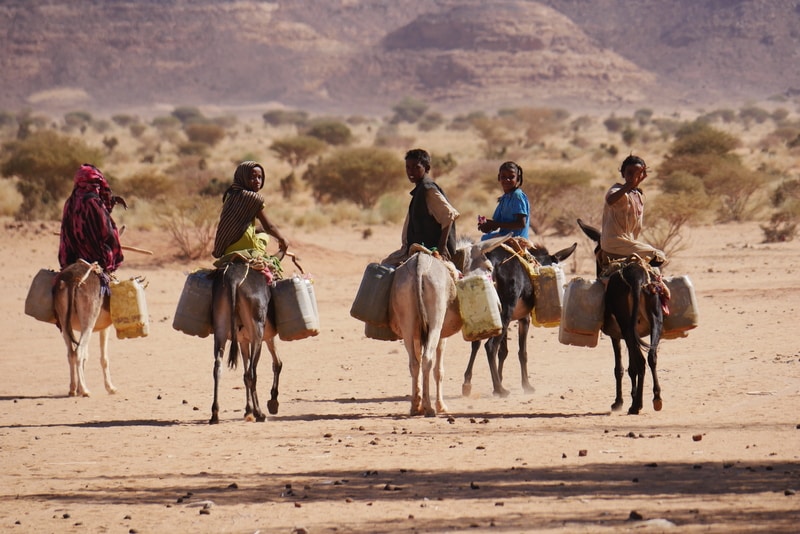
Over the past few decades, Sudan has made headlines for all the wrong reasons. As a result, the country’s name often conjures images of bloodshed and brutal dictatorships, while its wealth of treasures have been all but ignored. Most people are not even aware that, beneath Sudan’s shifting grains of sand, lie remnants of an empire that once rivaled Ancient Egypt. Or that the country contains more pyramids than any other place in the world.
Sudan offers an unexpected array of things to do, places to see, and experiences to be had. It is a country that boasts tremendous attractions, heaps of natural beauty, and a population that is among the friendliest in the world.
Sure, traveling in Sudan is not for the inexperienced adventurer. Obtaining a visa can be tricky and confusing. Hotel booking websites are largely inaccessible. Information on the tourist attractions in Sudan is scant, at best.



